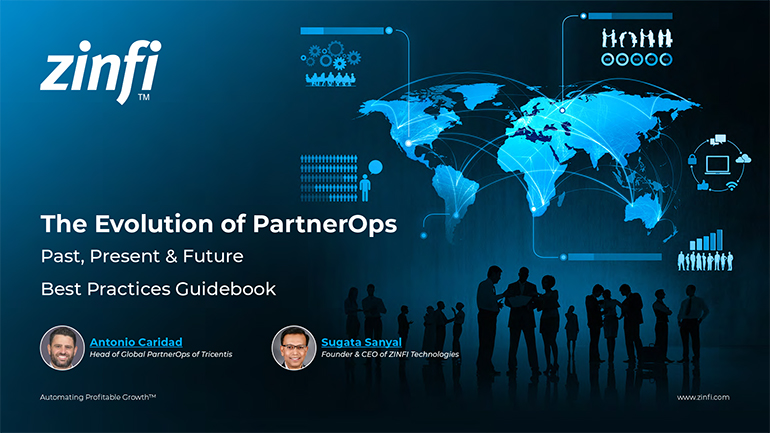Glossary - What is - Financial Control in Partner Management
What is Financial Control in Partner Management?
Financial control in partner management refers to the processes and mechanisms implemented to oversee and manage the financial activities and transactions between a company and its partners. This includes budgeting, forecasting, expense tracking, revenue sharing, and financial reporting. Effective financial control ensures that all monetary dealings are transparent, accurate, and compliant with regulatory standards. It also helps minimize financial risks, detect discrepancies, and optimize financial performance.
In the context of partner ecosystem management and partner management automation, financial control plays a crucial role. It ensures that all financial interactions are streamlined and efficiently managed through automated systems. This automation facilitates real-time financial tracking, reduces manual errors, and improves the overall accuracy of financial data. By integrating financial control mechanisms within partner management platforms, organizations can maintain better oversight of their financial transactions, enhance collaboration with partners, and drive more informed financial decisions.
Key Takeaways
- Enhanced Financial Visibility: Financial control mechanisms provide enhanced visibility into all financial transactions between a company and its partners. This transparency is critical for identifying trends, monitoring performance, and making informed decisions. Automated systems enable real-time tracking of expenses, revenues, and other financial metrics, ensuring that all stakeholders know the financial status at any time. Enhanced financial visibility reduces the likelihood of fraud and discrepancies, fostering a trust-based relationship with partners.
- Improved Budgeting and Forecasting: Effective financial control aids in accurate budgeting and forecasting by providing comprehensive data on past financial performance and future financial projections. This helps organizations allocate resources efficiently and plan for future financial needs. Automated partner management platforms can analyze historical data and predict future trends, facilitating better budget planning and economic forecasting.
- Compliance and Risk Management: Ensuring compliance with financial regulations and managing financial risks are critical components of financial control in partner management. Automated systems help organizations comply with local and international financial rules by maintaining accurate records and generating necessary reports. These systems also help identify potential financial risks and implement measures to mitigate them. Check out ZINFI’s Partner Relationship Management.
- Streamlined Revenue Sharing: By automating calculations and distributions, financial control mechanisms streamline the revenue-sharing process between partners. This ensures all partners receive their fair share of revenues based on predefined agreements, reducing disputes and fostering a harmonious relationship. Automated revenue-sharing systems also improve accuracy and efficiency, saving time and resources.
- Accurate Financial Reporting: Accurate financial reporting is essential for maintaining transparency and trust in partner relationships. Financial control systems generate detailed and accurate financial reports, providing insights into the partnership’s financial health. These reports help assess performance, identify areas for improvement, and ensure accountability among partners.
Summary of Key Takeaways:
Financial control in partner management is essential for overseeing financial activities and ensuring transparency, accuracy, and compliance. Key benefits include enhanced financial visibility, improved budgeting and forecasting, compliance and risk management, streamlined revenue sharing, and accurate financial reporting. These benefits help organizations optimize financial performance, build trust with partners, and make informed financial decisions. Integrating financial control mechanisms within partner management platforms is crucial for achieving these outcomes efficiently and effectively.
Key Examples
- Automotive Manufacturing: Financial control ensures that transactions between manufacturers and suppliers are transparent and accurate in the automotive manufacturing industry. Automated financial systems track expenses related to raw materials, logistics, and production processes, enabling manufacturers to manage costs effectively. Accurate financial reporting helps assess supplier performance and make informed procurement decisions.
- Consumer Electronics: Financial control in the consumer electronics sector involves managing financial interactions between manufacturers, distributors, and retailers. Automated systems streamline revenue sharing, ensuring that all parties receive their rightful share of profits. This transparency reduces disputes and fosters stronger partnerships. Budgeting and forecasting tools help plan for product launches and manage marketing expenses.
- Energy Production: In the energy production industry, financial control is crucial for managing transactions related to energy sales, equipment procurement, and maintenance services. Automated financial systems ensure compliance with regulatory standards and provide accurate financial reporting. Risk management tools help identify and mitigate financial risks associated with fluctuating energy prices and operational costs.
- Financial Services: Financial control in the financial services sector involves managing complex transactions between financial institutions, clients, and regulatory bodies. Automated systems enhance compliance with financial regulations, streamline revenue-sharing processes, and provide real-time financial tracking. Accurate budgeting and forecasting tools help plan for market fluctuations and manage investment portfolios.
- Food and Beverage: In the food and beverage industry, financial control mechanisms ensure accurate tracking of expenses related to raw materials, production, and distribution. Automated systems streamline financial reporting and compliance with food safety regulations. Budgeting tools help plan for seasonal fluctuations in demand and manage marketing expenses for promotional campaigns.
- Healthcare Services: Financial control involves managing transactions between healthcare providers, insurance companies, and patients. Automated financial systems ensure accurate billing and revenue sharing, reducing administrative costs and improving efficiency. Compliance tools help adhere to healthcare regulations and manage financial risks associated with patient care.
- Information Technology: In the IT industry, financial control mechanisms manage transactions related to software development, licensing, and support services. Automated systems streamline revenue sharing between developers and resellers, ensuring fair distribution of profits. Financial reporting tools provide insights into project costs and profitability, helping in resource allocation and project planning.
- Pharmaceutical Development: Financial control in pharmaceutical development involves managing financial interactions between research organizations, regulatory bodies, and healthcare providers. Automated systems ensure compliance with financial regulations, streamline revenue sharing from drug sales, and provide accurate financial reporting. Budgeting tools help plan for research and development costs and manage marketing expenses.
- Retail Industry: In the retail industry, financial control mechanisms manage transactions between retailers, suppliers, and customers. Automated systems streamline inventory management, revenue sharing, and financial reporting. Budgeting tools help plan for seasonal sales, manage promotional expenses, and optimize supply chain costs.
- Telecommunications: Financial control involves managing interactions between service providers, equipment manufacturers, and customers. Automated systems ensure accurate billing, revenue sharing, and financial reporting. Compliance tools help adhere to telecommunications regulations and manage financial risks associated with network operations and service delivery.
Conclusion
Financial control in partner management is vital for maintaining transparency, accuracy, and compliance in financial transactions between a company and its partners. It enhances financial visibility, improves budgeting and forecasting, ensures compliance and risk management, streamlines revenue sharing, and provides accurate financial reporting. Each industry, from automotive manufacturing to telecommunications, benefits from effective financial control mechanisms tailored to their specific needs. Organizations can optimize financial performance, build trust with partners, and make informed financial decisions by integrating financial control systems within partner management platforms. Automated financial control systems reduce manual errors, improve efficiency, and provide real-time insights into financial metrics, enabling better management of financial activities. This integration is essential for fostering solid and collaborative partnerships, ensuring financial stability, and achieving long-term business success.
Associated Keywords:
- Financial Control in Partner Management
- Partner Management Financial Oversight
- Automated Financial Control Systems















